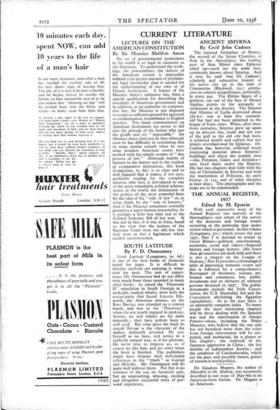ANCIENT SMYRNA By Cecil John Cadoux
The reputed birthplace of Homer, the second of the Seven Churches of Asia in the Apocalypse, the leading port of Asia Minor since Ephesus silted up—such are the main facts commonly known about Smyrna. And it may be said that- Dr. Cadoux's scholarly and exhauStive history of his native city up to the time of Constantine (Blackwell, 25s.) empha- sises its relative insignificance, politically, in every age. The Hittite figure of a goddess, cut out of the face of Mount Sipylus, points to the antiquity of settlement in the district. The Smyrna that Alyattes of Lydia destroyed about 585 B.C. was at least five centuries old but had not been admitted to the league of Ionic cities. When, after three more centuries, Smyrna grew up again on its present site, south and not east of the gulf as the old city had been, it achieved wealth and culture but was always overshadowed by Ephesus. Dr. Cadoux has, however, collected much interesting ,material about Smyrna's buildings and about the notable men —like Polemon, Galen and Aristides— who lived there under the Empire. His last two chapters deal fully with the rise of Christianity in Smyrna and with the martyrdom of Polycarp, its early bishop, in 155, and of other disciples at later dates. The photographs and the maps are to be commended.










































 Previous page
Previous page